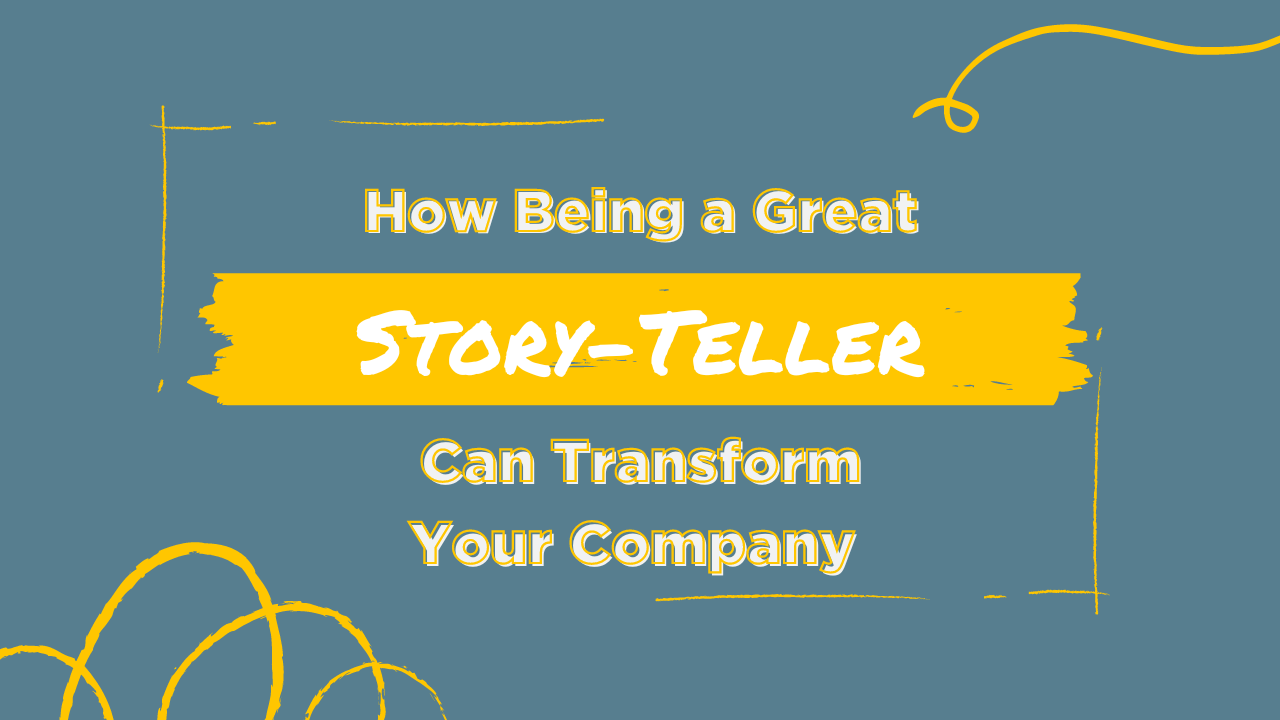
I can’t remember a single piece of advice my grandfather gave me, but I recall very clearly that as a child he took the money his family collected from selling eggs to the bank, and walked into the middle of a bank robbery. I remember that when he was a young parent, his sons became lost in a cornfield and it took a search team to find them. And I remember that last summer, shortly before his 93rd birthday, he tried water skiing.
Each of those stories have taught me something about my grandfather and about life, much more than any bit of advice ever could. Stories illustrate who we are and what matters.
For a company owner or leader, story-telling is a powerful tool in your leadership toolbox. Research shows that we listen to and remember stories much better than we do a list of bullet points or a deck of PowerPoint slides.
Story-telling is one of the greatest tools in a leader’s toolbox.
You should be using stories in daily interactions with your team members; in your onboarding and training of new employees; as you give feedback to others; and in every formal communication setting including your website, annual meetings, and the summer family picnic.
You should be telling more stories - but not just any story. Telling the story of last weekend’s softball game or your kid’s piano recital may build comradery, but it won’t move the needle on your strategic goals.
To really use stories to transform your company, you need to look for and tell stories that illustrate your company’s values and culture, and show how your company’s people put these values to work.
Imagine you work for a software company where collaboration is shared as a core value of the organization. Now put yourself in the role of the average team member having a conversation with the company founder. Which would make more of an impression?
- Being told, “We are a company of collaborative people working in teams. Go collaborate.”
- Or being told, “Last month one of our clients needed a new software solution, and they needed it fast. Jane knew she could come up with an early draft and meet their deadline, but she knew the software would be better if she could pull a team together. The problem was, all our working groups were on existing projects. Instead of giving up, Jane talked to each of the project leads and got them to give her one team member each, for a single day. They huddled together over Jane’s rough design and made some significant improvements. Other people put in some evening hours to help test the software. In the end, Jane had over 20 people working with her, each making improvements. And the client was delighted with the end product. What a great reminder that we’re a collaborative bunch – when we need each other, you can count on your teammates to deliver.”
The story is more powerful, right?
Business leaders who use stories to make their company’s values meaningful will find their team members more inspired, and more ready to spring into action.
So how are you using stories?
If you’re not already using stories to shape the way you lead, or want to be more intentional about doing so, we invite you to download our 10-Minute Story-Telling Tool. Use it in your next team meeting to find compelling stories of your company at its best, then challenge yourself and others integrate the stories into their daily communications with their clients, customers or colleagues.
Find the story-telling tool at www.cvdl.org/story-telling.

If you’d like to further explore the power of story-telling and learn new tools for shaping strategy and developing leaders through collaborative approaches, join me, Amber Johnson from the Center for Values-Driven Leadership at the 24th Annual Gathering of Games, where I'll present a workshop on the topic. The Gathering of Games takes place September 7-9, 2016 in Dallas, Texas.
.png)








.png)




-5.png)

